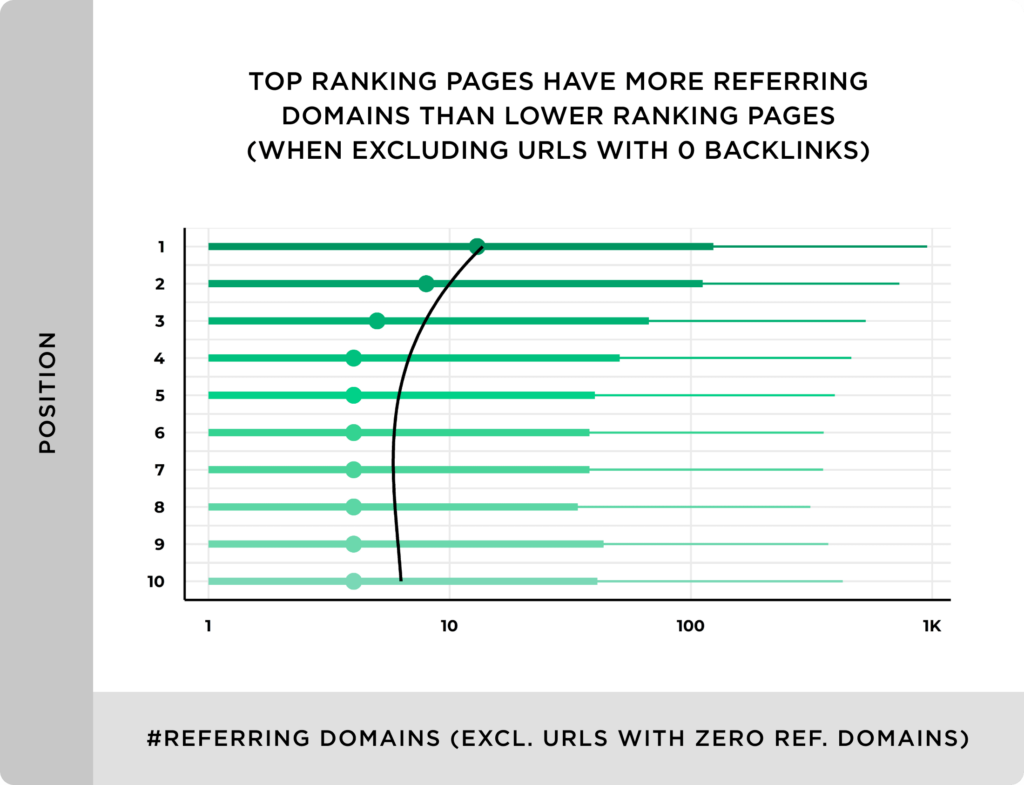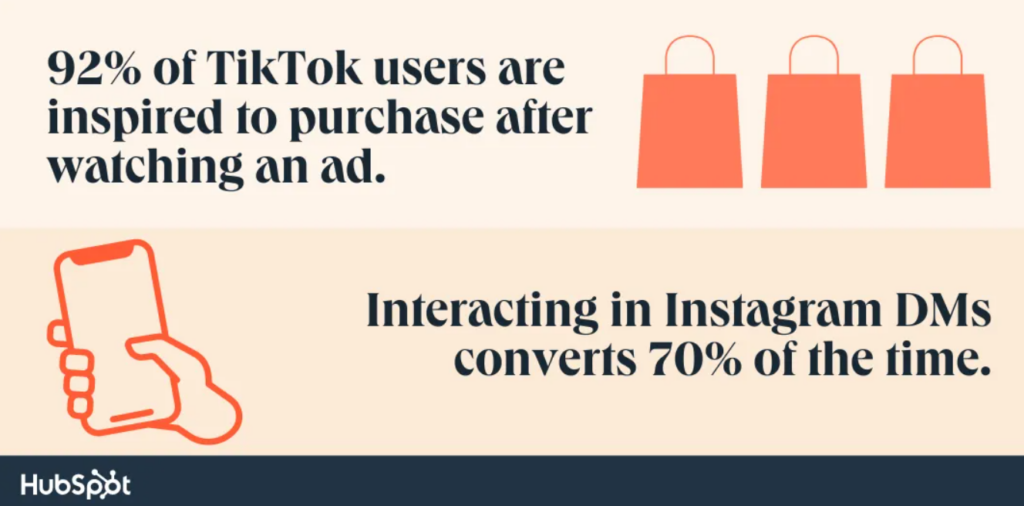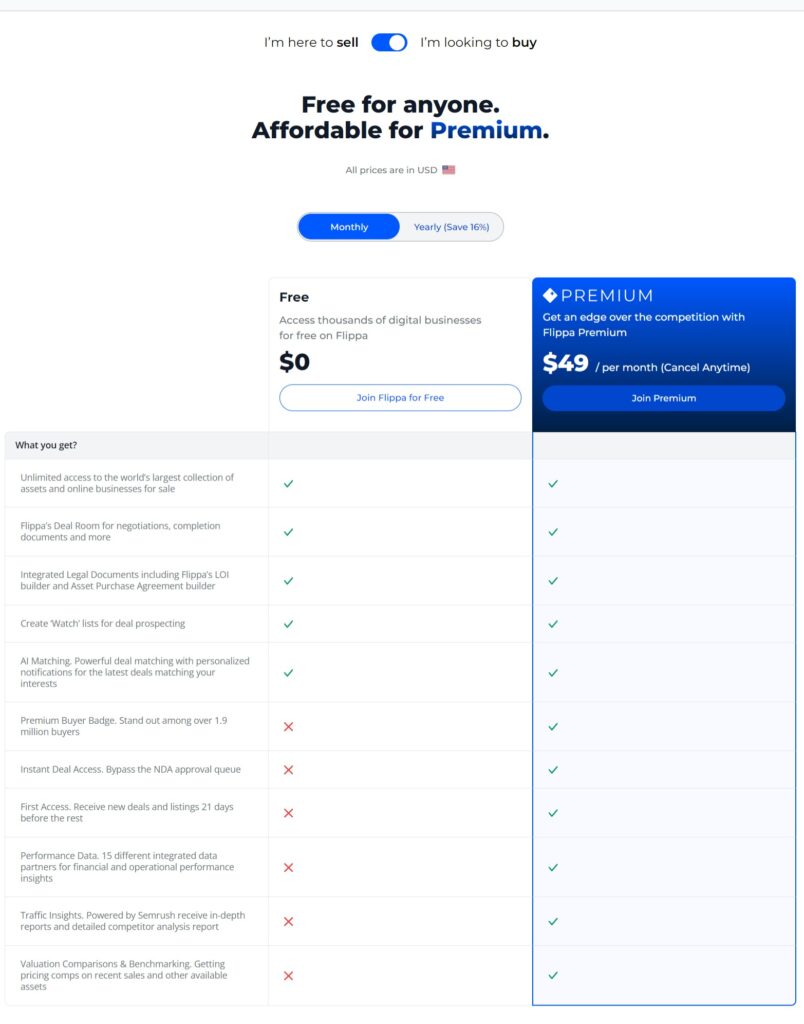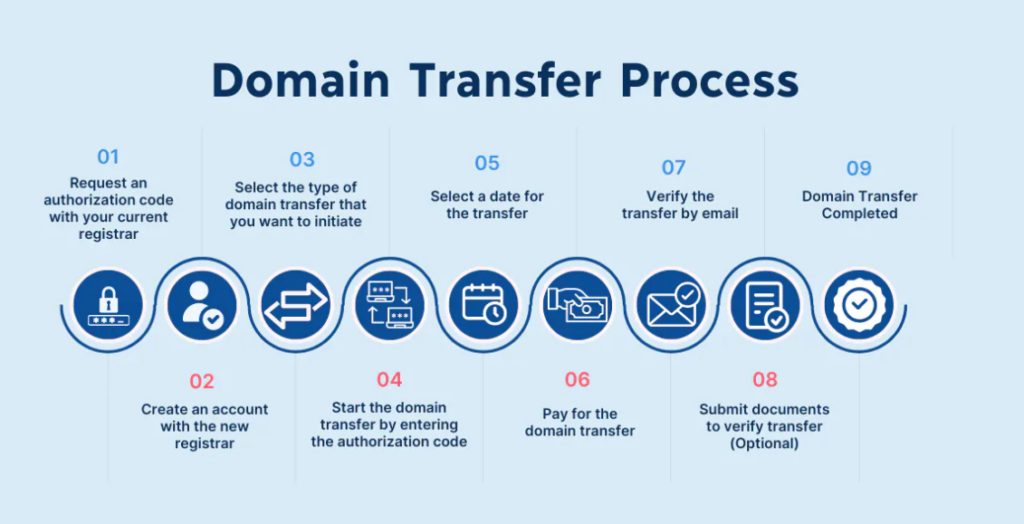Buying a website for your business is a beneficial strategy to build authority, get backlinks, drive more traffic, and diversify your portfolio. It’s a common strategy that’s used by a lot of businesses across sectors.
Semrush, for instance, acquired Backlinko back in 2022 with its 500K+ monthly organic traffic. It didn’t Backlinko to its main domain rather using it as is for brand authority.
When you buy a website, you purchase a business or brand – not just a domain name. It is essentially an acquisition where you acquire an online business with its domain, content, traffic, and everything.
If you are interested in buying an existing website, this guide covers everything you need to do it successfully. Here’s a list of the steps you should follow to develop and execute a website acquisition strategy:
1. Reasons for Buying a Website
You should have a clear understanding and a purpose to buy a new website. Businesses use a wide range of reasons to buy a website such as:
- To build their primary domain’s authority by redirecting a new domain with its backlinks
- To reach a new audience
- Expansion of existing business by adding a new business to the portfolio
- To generate an additional stream of income
- Competitor acquisition to increase market share.
The list can go on and on.
The most common reason why businesses acquire new websites is to increase their reach in terms of traffic, brand awareness, and new markets.
For example, WP Engine acquired 5 plugin websites in the same niche to grow its portfolio and reach an existing customer base. The sites it acquired included Advanced Custom Fields (ACF), WP Migrate, Better Search and Replace, WP Offload SES, and WP Offload Media.
This is an example of website acquisition in your own niche to increase reach.
On the other hand, HubSpot acquired SourceWP with a strategic approach to drive more traffic to its blog by entering a different market (related to WordPress). It was a well-thought strategic move that helped HubSpot increase traffic significantly right after acquisition:

You need to be clear on what your website acquisition purpose is and this requires that you consider the following things critically at the goal-setting stage:
- Ensure that you have the right team, resources, and expertise to manage the new website effectively
- When moving into a new market or industry, do your homework and make sure you have the right resources to manage it
- Set measurable goals so you can track performance post-acquisition such as traffic increase, more revenue, leads, etc.
- Write and share your goal with relevant teams
- You can have multiple goals for a single website purchase but make sure they all are individually trackable.
2. Set Evaluation Criteria
You need to set and define the criteria to evaluate and screen potential websites. This is an essential step for identifying the right website.
The best approach is to derive evaluation criteria from your goal.
For instance, if your goal is to enter a new market, you need to look at variables like website traffic, domain authority, sales, revenue, social reputation, and others.
Here’s a list of the potential variables you should include in your evaluation criteria:
Revenue
Look at the revenue from the last 12 months (at least) and figure out if it’s growing, stable, or declining. Avoid looking at monthly, quarterly, or biannual revenue.
You must look at Earnings Before Interest, Taxes, Depreciation, and Amortization (EBITDA) as it’ll give you a more accurate and realistic picture:

One major benefit of EBITDA is that it makes comparing different businesses in the same industry easy.
There are other things you need to look at when evaluating the revenue and finances of the website such as the seasonality effect, the number of revenue streams, and others:

Take a holistic revenue evaluation approach instead of conventional financial metrics.
Business Age
Most businesses don’t consider business age when buying a website. There’s a difference between business age and domain/website age.
You need to evaluate both.
Business age is the age of the business and it should be at least one year. New businesses usually have a huge risk as it gets hard to track seasonality and trends.
Website age is the age of the domain which is always equal to lower than the business age. For instance, a business might have existed for years without an online presence and might have created a website in the past few years.
It’s important to have these details with you as it makes evaluation and website comparison easier.
Traffic
It is perhaps the most important variable to evaluate when looking at a website to buy for your business. You need to specifically look at the following:
- Traffic stability
- Traffic sources
- Diversity of traffic
- Top keywords and pages.

The traffic of the website should be diverse which means that more than 50% of traffic shouldn’t be generated by a single source. Organic traffic is usually a top priority for buyers as it has its unique benefits.
Organic traffic, however, is hard to track completely as it takes, on average, 6 months for a new page to reach the first page of Google. This means the domain age should be at least a year to get a clear and complete picture of organic traffic and rankings.
What’s important is that only 4.2% of websites (in a study by Semrush) managed to stay on Google’s first page for 13 months while most of the pages kept fluctuating. The majority of domains reach the top 10 positions for a month only:

It is essential to look at both current and historical rankings and traffic as current rankings might fluctuate and won’t stay forever. You need to run a full website audit via Moz, Semrush, Ahrefs, or any other tool of your choice.
You also need to get access to Google Analytics, Search Console, and other webmasters’ tools from the admin for evaluation. This is an important part of traffic evaluation that shouldn’t be skipped.
Referral traffic from social channels and other sites needs to be evaluated as well. Look at the referral traffic sources and figure out their potential value and stability.
Backlinks
When you buy a website, its backlink profile is the most important factor that shouldn’t be missed. Backlinks are the top ranking factor that not just Google but other search engines use to rank websites and pages:

It’s important to analyze the backlink profile of the website you are about to buy. Old websites, generally, have a high number of referring domains and, therefore, require intensive and in-depth backlink profile analysis.
You need to use a backlink analysis tool like Moz, Semrush, Ahrefs, and others.
Here’s a list of key factors to evaluate:
- Number of referring domains
- Number of backlinks per domain
- Link relevancy
- Anchor text
- Unique backlinks
- Backlinks acquired in the last 90 and 180 days
- Use of PBNs
- Use of black hat and grey hat backlink acquisition strategies
- Backlink acquisition strategy and tactics used.
What you need to focus on is that backlinks are acquired naturally over a period of time as that’s what search engines value. This means you have to contact the site owner and SEO team to get insights into their strategy.
There’s no direct way to figure out the complete backlink building strategy of a website so you might have to get help from third-party tools.
Since backlinks correlate with the number of backlinks, do follow backlinks, and referring domains, it is critical to analyze them cautiously if the website gets more than 50% of traffic from search engines:

Important things to consider when checking the backlink profile of a potential website:
- Type and relevance of backlinks
- The number of backlinks lost per month (on average)
- Ignore too old backlinks as they might get replaced or removed
- Percentage of traffic received from search engines
- The percentage of traffic declines if the site loses the majority of its backlinks.
Social Presence
An important evaluation criterion is the social presence of the business and its reputation and credibility. Even if the website doesn’t generate any traffic or revenue from social sites, it should have some sort of social presence.
Research shows that people actively purchase via social accounts. The conversion rate of Instagram DMs is a whopping 70%. You don’t get such high conversion rates with other marketing channels:

You can’t ignore the social accounts of the site you are buying. Here’s a list of important variables to inspect:
- Has the business acquired social accounts and user names on all the leading social platforms?
- Number of followers per social account and total
- Follower engagement level
- How often new content is posted across social accounts?
- Social advertising accounts and their statuses
- Percentage of traffic generated via social media.
Ahrefs and Semrush have social analytics tools that let you monitor the social presence of any website. It’ll give you a nice idea of the current standings.
Market Share
In certain businesses, such as SaaS, ecommerce, and most B2B businesses, you need to find the market share of the business and website you are about to buy. You need to find out the total industry revenue to find market share of a business:

It works for specific industries and niches where it’s possible to find total industry revenue.
Market share tells you a few essential things about a business:
- Stability
- Growth trajectory
- Market control
- Audience and market reach
- Revenue projections
- Growth potential
- Weaknesses
- Efficacy of market strategy.
Tech Stack
What tools and software does the website use? This is important for several reasons as it tells you how effectively you can integrate operations into your existing business.

Here’s a list of the crucial technologies you need to check:
- List of all the tools and apps
- CMS
- Web host
- Marketing tools
- Analytics and data apps
- CRM tool.
Evaluating the tech stack tells you a few things about the website:
- Cost to run website and business
- Learning curve
- Owner supervision and involvement
- Migration-related challenges
- Ease of integration.
If you want to merge a new website with your existing website, you need to make sure that all the tools can be integrated with your existing tech stack.
If you want to keep it running separately, the average monthly cost and learning curve are two major factors that you need to consider.
3. Find Potential Websites
Once you have defined evaluation criteria and you know what you want to buy, it’s time to go ahead and find potential websites.
There are a few different ways to find websites:
Marketplaces
You can find potential websites via marketplaces like Flippa where sellers list their sites. These marketplaces connect sellers with buyers and act as an intermediary.
It is best for buyers as it keeps you protected as funds are kept in escrow which are released after complete migration of the assets. Secondly, it’s much easier to find potential websites through a marketplace as you’ll find hundreds of sites.
If you have a low budget, Flippa is an ideal option as it has low fees and decent transparency. You can start free and find relevant sites:

Flippa also offers brokerage services where they’ll find, vet, and finalize everything for you.
Brokers
If you have a high budget, you should consider brokers who offer customized solutions. Brokers like Empire Flippers have a curated list of sites that they don’t disclose to everyone. They run their own evaluations to find and vet websites before they’ll pitch you any.
This makes it somewhat hard to find potential websites without paying an upfront fee (varies from broker to broker).
Brokers charge you a high fee as they handle everything end-to-end for both seller and buyer. Additionally, the sites are quite expensive and are usually established businesses. Here’s an example:

The good things about brokerages are that:
- The sites are vetted and evaluated
- You get access to established businesses
- Customized services with priority support.
This all comes at an additional cost which is usually as high as 15%+/- of the transaction value.
One-on-One Deals
If you are targeting a specific website and want to buy it, you have to contact the business owner directly. This approach requires that you deal with the website owner privately with or without any intermediary.
The benefit of one-on-one dealing is that it eliminates third parties and there’s no other buyer so you can negotiate easily. The downside is that it requires a lot of work on your end as you’ll have to manage everything yourself.
This usually happens when you are interested in acquiring your competitor to increase your market share. In this case, your competitor might not be interested in selling your website at the moment. You need to propose a lucrative offer they can’t refuse.
Additionally, it requires impeccable negotiation skills. Make sure you have the right resources.
4. Analyze Potential Websites
After you have prepared a list of potential websites to buy, it’s time to analyze them based on the defined criteria.
You need to give weight to each criterion based on its importance and then rate potential websites for individual criteria out of 10 or 5.
Prepare an Excel sheet and list all the websites with their ratings there.
Here’s how to analyze websites:
- Use relevant tools such as Semrush or Ahrefs to audit websites
- Give a score out of 10 (or 5) to each website for each variable
- Take average scores to find the final ratings.
Here’s an example Excel sheet that you can use for reference:

You also need to take notes about the strengths and weaknesses of each website you analyze. This means you have to prepare a separate document for every website you analyze so that you can refer back to notes quickly when needed in the future.
Analysis is a time-consuming and challenging task. Make sure that everything is properly documented for future reference.
5. Shortlist and Negotiate
Rating websites during the analysis process makes it easy to shortlist websites.
Ideally, you should shortlist 3-5 websites and then compare them to choose one. You need to start negotiation with a single website at a time to keep it manageable.
Before negotiation, get access to Google Analytics, Search Console, and other platforms to ensure transparency. This is a normal practice over at Flippa where potential buyers ask for (and get) access to Analytics.
Whether you are dealing through a marketplace, broker, or directly, you’ll always have to negotiate with sellers which is, often, the hardest part of the entire process.
Negotiation normally involves the following:
- Getting more details about the business and website
- Verification of data and information shared
- Price negotiation
- Legal aspects
- Transfers and escrow
- Contract and agreement terms
- Post-sales support and communication.
If you are using a brokerage, they will handle this on your behalf but you can’t sit back. You have to be involved in the process.
Negotiation isn’t always about price, rather there’s so much more.
For instance, payment terms, seller obligations, and warranties are common hurdles where you’ll have to spend a lot of time. Sellers usually want to pass obligations to buyers and offer limited warranties.
You have to negotiate with more than one seller and it needs a lot of preparation.
6. Finalize the Deal
Once the deal is finalized, it’s recommended to have a formal agreement signed before the transfer of assets. Here’s an example of a website asset purchase agreement:

Tweak it based on your negotiation with the seller and have it signed.
Once an agreement is signed, a fund transfer is the next step that requires precaution. There are a few different ways to send payment securely and safely to the seller:
- Use escrow. Add funds to the escrow which will be released in milestones as the asset migration is processed
- If you are using brokerage services, your broker will act as an intermediary in this case and will assist in payment transfers. The broker doesn’t bear any responsibility for mishaps, scams, and frauds so make sure you split payments
- Ideally, send 40-50% of the payment after the agreement is signed and send the remaining 40% upon final migration of assets. Send the last 10% after a week of migration and once you have everything working.
7. Migrate Assets
Depending on the type and size of the website you purchased, it can take several days for complete transfer of all the assets. The major assets include:
- Domain name
- Website files
- Email accounts
- Social accounts
- Business accounts
- Apps and tools.
Domain name transfer and website files are the two most critical assets that should be transferred immediately. Transferring a domain name requires a few days and the process looks like this:

Website files, on the other hand, can be transferred in a zip folder which you can upload to your hosting account. Or, you can use a plugin to migrate content seamlessly to your CMS such as Migrate DB or Duplicator.
Cross-CMS transfer requires downloading and uploading files via FTP. In the case of the same CMS, you can use a plugin or script and do it effortlessly.
8. Post Migration
After you have migrated all the assets successfully, you need to make sure that everything is working as expected. Bugs and issues should be reported on time to the seller and intermediary so they can be fixed.
Sellers usually offer support for a month or so after migration (this should be a part of the agreement). You need to utilize this period smartly and have things sorted completely at your end.
The idea is to upload website files immediately and report any issues. If the domain isn’t transferred on time, you should upload website files on a local server to see if the website is working as expected.
Once you have everything in working condition and the website is up and running on your server, you can release the final payment and close the deal.
Final Words
Buying a website for your business is a great approach to expanding your business. However, things can go south if you don’t know what you are doing.
For instance, poor migration can decline the SEO performance of the website which might take months to recover.
You need to make sure you have the right resources including people who know how to deal with technical stuff. It isn’t a one-man’s job.
If you are buying a website for the first time, it’s recommended to use Flippa or a similar marketplace as these marketplaces are much safer due to escrow.
Also, start with a small investment and then move from there.
And, follow the guide.
All the best, and happy expansion.
Featured Image: Pexels



